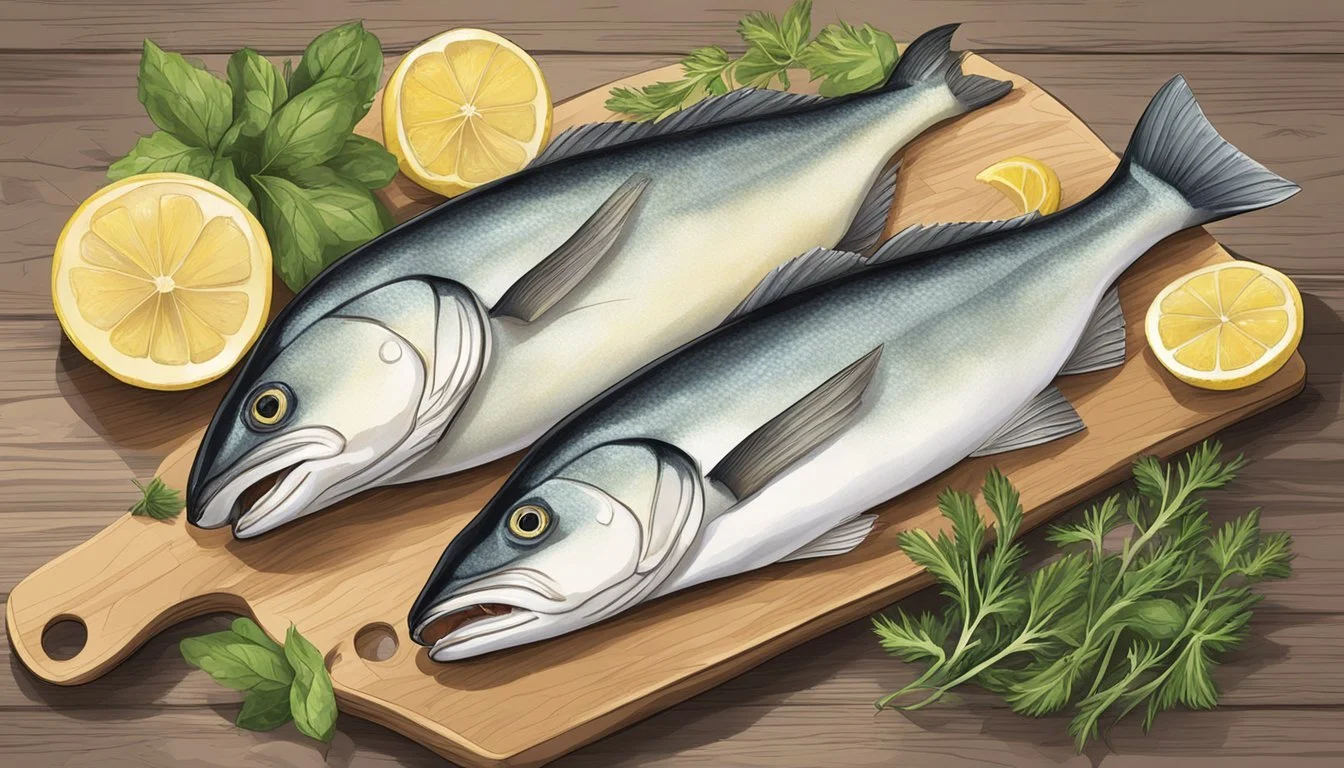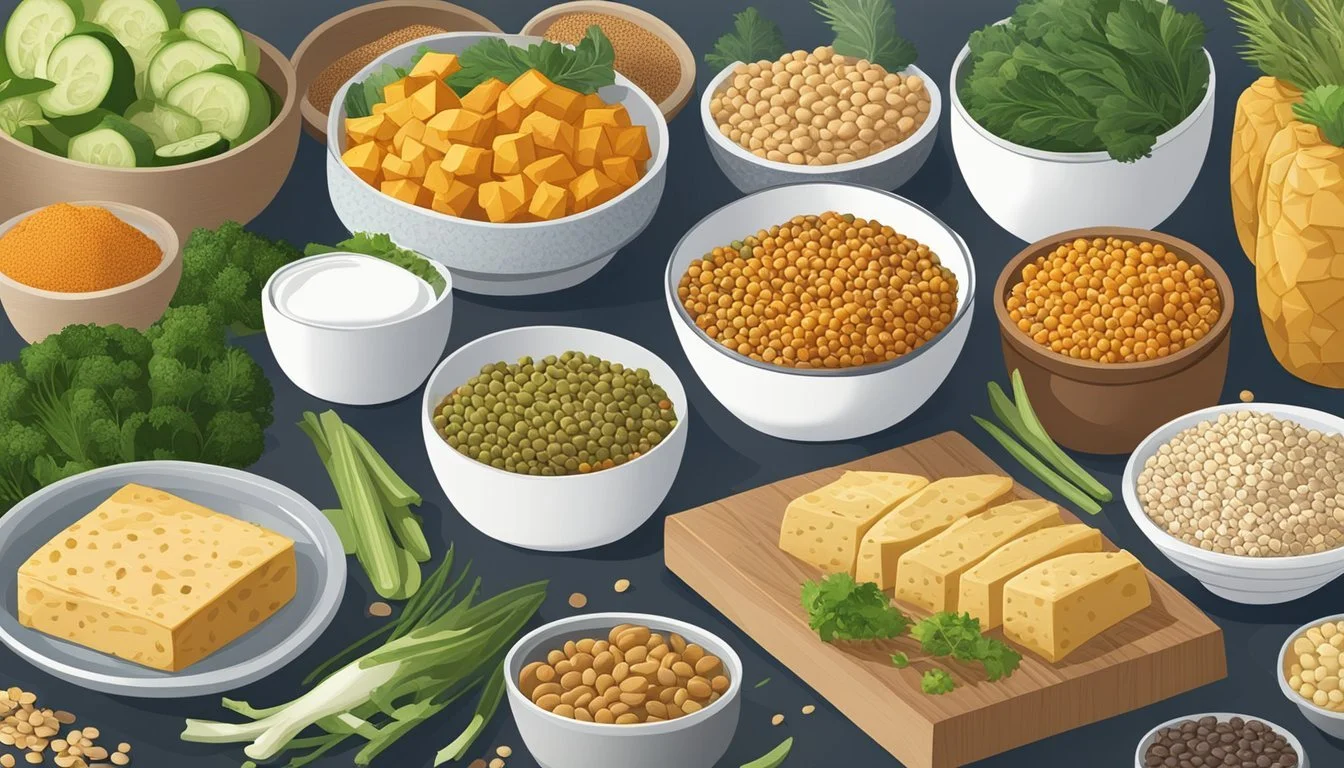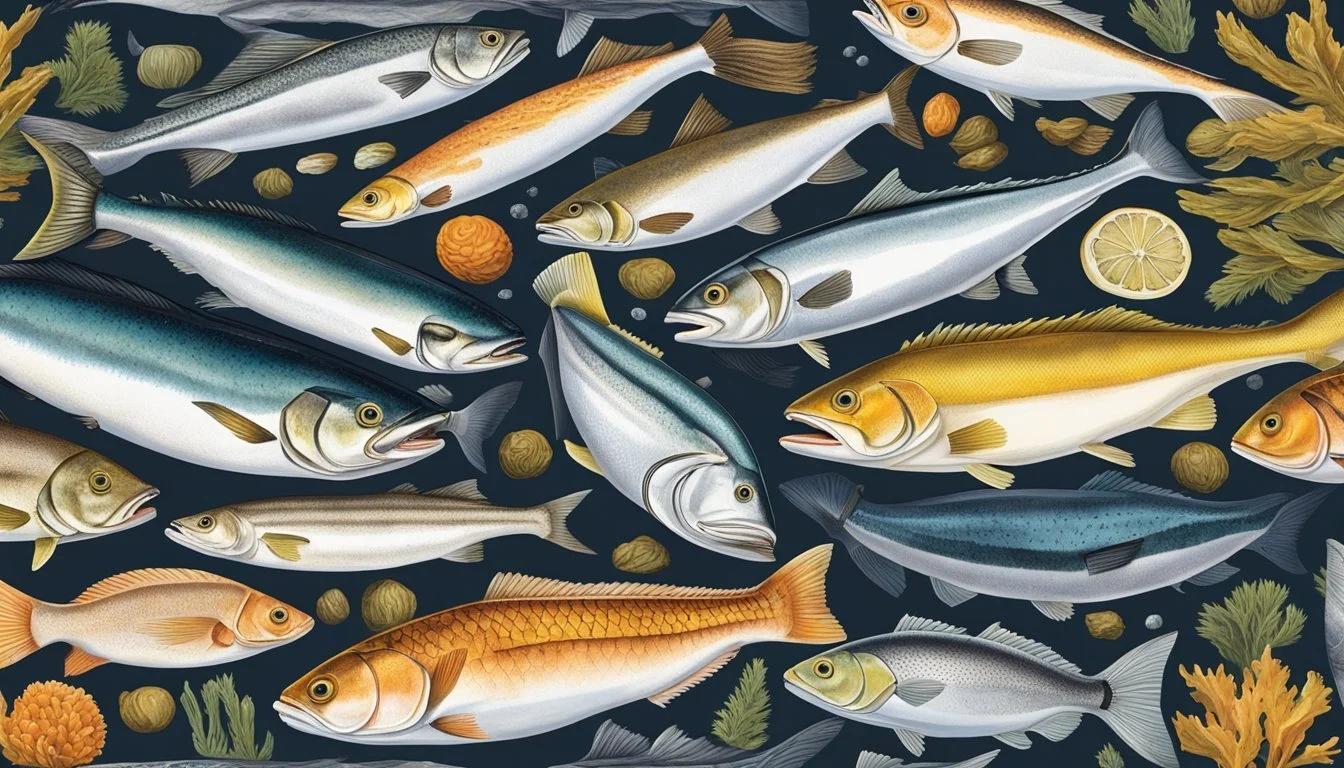Cod Substitutes
Best Alternatives for Cooking and Flavor
With cod's popularity and versatility in various recipes, it's no wonder people seek reliable substitutes when it's unavailable. Hake is a top alternative due to its high nutritional value, low saturated fats, and similar flavor and flaky texture to cod. Additionally, Chilean sea bass, known for its rich and buttery flavor, offers a firm and flaky texture, making it an excellent option for various dishes.
Haddock also presents itself as a noteworthy substitute, particularly for baking, poaching, and frying, despite its tendency to fall apart on the grill. Its smaller flakes and quicker cooking time are ideal for specific recipes. Broiling enthusiasts might find halibut appealing due to its firm texture, which holds up well under heat, providing a distinct but favorable variation from cod.
Understanding Cod
Cod is a popular fish known for its versatile culinary applications and mild flavor. It is highly valued for its delicate, flaky texture and nutritional benefits, making it a staple in many diets around the world.
Characteristics of Cod
Cod fish is typically found in the colder waters of the North Atlantic and the Pacific Oceans. This fish is renowned for its white, flaky flesh, which is tender yet firm enough to hold up to various cooking methods. Cod has a mild, delicate flavor with a slightly sweet, buttery undertone. This makes it an excellent choice for a range of recipes, from frying to baking and grilling. Additionally, cod’s texture allows it to be a key ingredient in traditional dishes such as fish and chips.
Nutritional Profile
Cod is not only delicious but also packed with nutrients. A 3.5-ounce (100-gram) serving of cod provides approximately 82 calories, making it a low-calorie option. It's rich in protein, offering around 18 grams per serving, which is essential for muscle repair and growth. Cod is low in fats, particularly saturated fats, contributing to heart health. It is also a good source of vitamins and minerals, including vitamin B12, vitamin D, phosphorus, and selenium. These nutrients play crucial roles in energy metabolism, bone health, and immune function, making cod a nutritious addition to any diet.
Culinary Uses
Cod's versatility in the kitchen is one of its most appealing attributes. Its mild flavor and firm texture make it suitable for various cooking methods. Cod can be fried, making it perfect for traditional fish and chips. Baking cod is another popular method, often involving simple seasonings to enhance its natural flavors. Grilling is also an excellent option, as it helps maintain the fish's firmness and adds a smoky flavor. Other methods include poaching and broiling, which preserve the delicate texture of the fish while allowing it to absorb the flavors of accompanying ingredients. Whether prepared fresh or from frozen, cod remains a favorite among chefs and home cooks alike.
Why Look For Cod Substitutes?
Due to environmental concerns, fluctuating market prices, and health considerations, there are several reasons why consumers might seek alternatives to cod. Various substitutes offer similar culinary benefits while addressing these issues.
Sustainability Concerns
Cod, particularly Atlantic cod, has faced significant overfishing, leading to notable population declines. This has raised alarms among environmentalists and fishing communities. The Marine Stewardship Council (MSC) has set guidelines to promote sustainable fishing, yet the demand often surpasses supply. Choosing sustainable options like hake or pollock, which have more robust populations and less environmental impact, can help mitigate this pressure. Sustainable fish choices contribute to healthier marine ecosystems and support responsible fishing practices.
Fluctuating Costs
The cost of cod can be highly variable due to supply chain disruptions and fishing regulations aimed at protecting dwindling stocks. When prices spike, restaurants and home cooks may turn to more cost-effective substitutes like catfish or haddock. Haddock, with its smaller flakes and quicker cooking time, offers a feasible alternative in many recipes. These options maintain the desired flavor and texture similar to cod without the unpredictable pricing.
Variety and Availability
Depending on region and season, cod might not always be readily available. Substitutes such as halibut or tilapia provide flexibility in sourcing ingredients. Halibut's firm texture makes it suitable for grilling and broiling, ensuring versatility in multiple cooking methods. Varied options allow chefs and consumers to experiment with different tastes and preparations, ensuring that dishes remain flavorful and enjoyable despite the unavailability of cod.
Health Considerations
Fish is a valuable source of omega-3 fatty acids, which are crucial for heart health. While cod is low in saturated fats and contains beneficial nutrients, other fish like hake and catfish offer similar health benefits. However, it is essential to consider mercury levels in different fish species. Substitutes such as tilapia have lower mercury content, making them safer choices for frequent consumption. Balancing nutritional benefits with potential risks is vital for maintaining a healthy diet.
Popular Cod Substitutes
When cod is not available, several excellent alternatives can replicate its mild flavor and flaky texture. Here, we explore five options that can be used in a variety of dishes, including both freshwater and saltwater fish.
Haddock: A Close Relative
Haddock is a mild-flavored fish with a slightly sweet taste. Its firm texture and white flesh make it similar to cod, making it a popular choice for seafood dishes. Haddock can be baked, broiled, or fried, and it works well in recipes that traditionally use cod, such as fish and chips or chowders. As a close relative to cod, haddock offers a comparable culinary experience, making it an effective substitute.
Pollock: The Versatile Option
Pollock, particularly Alaska pollock, is another excellent cod substitute. This fish has a mild flavor and slightly flaky texture that mirrors that of cod. Pollock is often used in fish sticks and imitation crab products. It can be cooked in a variety of ways, including baking, frying, and grilling. Its versatility makes it a staple in many households and restaurants.
Halibut and Haddock: Premium Choices
Halibut is known for its delicate flavor and firm, white flesh. It offers a richer taste than cod and holds up well during cooking, making it suitable for grilling and broiling. Haddock, as mentioned, is also a great substitute due to its similar flavor and texture. Both fishes are prized in culinary circles for their ability to take on a variety of seasonings and cooking methods.
Tilapia and Catfish: Freshwater Alternatives
Tilapia and catfish are popular freshwater alternatives to cod. Tilapia is mild-tasting with a slightly firm texture, making it adaptable to different culinary styles. It's commonly used in dishes that call for baked or sautéed fish. Catfish, on the other hand, has a more distinctive flavor and a firmer texture, often used in Southern U.S. cuisine, particularly in fried dishes.
Grouper and Bass: For Firmer Textures
Grouper and bass provide firmer textures compared to cod. Grouper is mildly sweet with a firm, flaky texture, suitable for grilling, baking, or broiling. Bass, particularly sea bass, has a richer, buttery flavor with a firm texture that remains moist during cooking. Both can be used in a variety of recipes, providing a satisfying alternative to cod.
Cooking with Cod Substitutes
When using substitutes for cod in cooking, it is important to consider the cooking methods, taste, and texture of the alternatives. Mastering breading and frying techniques will also ensure outstanding results.
Adapting Cooking Methods
Different cooking methods suit different fish substitutes. Haddock, pollock, and tilapia are excellent for grilling, broiling, and baking. Broiling brings out a smoky flavor, while grilling adds a slight char that complements white fish.
Tilapia has a mild flavor and benefits from light seasoning and quick cooking times. Halibut can withstand higher heat and is ideal for searing or grilling. Adjusting cooking times ensures that each substitute maintains its best texture without drying out.
Fish tacos and fish sandwiches come out well with pollock or catfish due to their robust texture. Including a touch of lemon juice or butter enhances the natural flavors without overpowering the dish.
Taste and Texture Considerations
When replacing cod, consider that each fish has unique flavor profiles and textures. Haddock and pollock have a flaky texture similar to cod, making them versatile in many recipes. Tilapia is softer and milder, which pairs well with stronger seasonings like Cajun spices.
Sea bass offers a slightly firmer texture with a delicate flavor. It is suitable for dishes needing a refined touch, such as broiled fish with herbal butter. Catfish has a meatier texture and works well in stews and fried preparations.
Maintain the integrity of the dish by choosing a substitute that aligns with the original recipe's taste and texture requirements. For a butter-basted baked fish, halibut or sea bass would be excellent choices.
Breading and Frying Techniques
Certain fish substitutes excel when breaded and fried. Pollock and catfish hold up well to breading, providing a crispy exterior while maintaining a moist interior. Using panko breadcrumbs or a seasoned flour mixture can add extra crunch and flavor.
For fish tacos, consider lightly breading tilapia or haddock and frying until golden brown. Ensure the oil is hot enough to prevent the breading from becoming soggy.
Adding a squirt of lemon juice after frying enhances the natural flavors. The contrast between the crispy breading and flaky fish makes for an appetizing dish, ideal for sandwiches or taco fillings.
Health and Nutritional Benefits
Choosing substitutes for cod can offer various health and nutritional benefits. These include strong sources of protein and omega-3 fatty acids, low-fat and calorie alternatives, and options rich in essential vitamins and minerals.
Protein and Omega-3 Content
Substituting cod with other fish is a great way to ensure adequate protein intake. Haddock, pollock, and halibut are excellent options, providing high-quality protein that is essential for muscle repair and growth. Omega-3 fatty acids, important for heart health and cognitive function, are found in these substitutes as well.
Halibut stands out due to its higher omega-3 content, making it beneficial for reducing inflammation and supporting immune function. These alternatives maintain similar nutrition profiles, ensuring a balanced and healthy diet.
Low-Fat and Calorie Alternatives
Hake and tilapia are two fish that offer lower-fat and calorie options compared to cod. Tilapia is particularly notable for being extremely low in fat while still providing a good amount of protein. Hake, a member of the cod family, is also a lean fish with minimal saturated fats.
These low-fat choices are ideal for those looking to manage weight without sacrificing necessary nutrients. Incorporating them into meals can also support heart health by reducing overall fat intake.
Vitamin and Mineral Rich Choices
Various cod substitutes are rich in essential vitamins and minerals, crucial for maintaining overall health. Sablefish is known for its high levels of vitamins such as A, D, and B12, as well as key minerals like selenium and iodine. These nutrients support immune function, bone health, and metabolic processes.
Haddock and pollock also offer considerable vitamin and mineral content, ensuring that even without cod, one's diet remains nutritionally robust. These fish provide a well-rounded nutrient profile, enhancing bodily functions and promoting overall well-being.
Sourcing Sustainable Seafood
When seeking sustainable seafood, it's crucial to choose certified fish and develop informed shopping habits at the seafood counter. These practices help ensure minimal environmental impact and promote responsible fishing.
Choosing Certified Fish
Sustainable choices start with certified fish. The Marine Stewardship Council (MSC) is a key player, providing certification to fisheries meeting rigorous standards. Look for the blue MSC ecolabel on seafood packaging, which signals the product's sustainability.
Another organization, Seafood Watch, offers consumer guides and app resources. These guides classify seafood into three categories: Best Choices, Good Alternatives, and Avoid. These classifications help consumers make informed decisions.
Certified fish not only supports environmentally friendly practices but also helps maintain fish populations. By selecting certified products, consumers contribute to the global effort of preserving marine ecosystems.
Shopping at the Seafood Counter
Visiting the seafood counter should be an informed process. Consumers are encouraged to ask questions about the source and sustainability of the fish. Fishmongers can provide insights on whether the seafood is farmed or wild-caught, and if it meets sustainability criteria.
Local fishmongers often have ties to responsible fisheries, offering products with minimal environmental impact. For a sustainable choice, inquire about the catch method used. Methods like line-caught or pole-and-line are generally more sustainable compared to trawling or dredging.
By prioritizing transparency and asking about the source, method, and certifications, customers play a proactive role in supporting sustainable seafood practices. This ensures their purchases align with environmental and ethical standards.
Exploring Lesser-Known Fish
Many lesser-known fish provide excellent alternatives to cod, offering diverse flavors and textures that can enhance a variety of dishes.
Regional Favorites and Exotic Varieties
Whiting and monkfish are two notable options. Whiting, often overshadowed by more popular fish, has a delicate texture and a mild taste similar to cod, making it suitable for baking and frying. Monkfish, sometimes called "the poor man's lobster," has a firm texture and a slightly sweet flavor, ideal for grilling or stewing.
Gurnard and striped bass are also excellent. Gurnard is prized for its firm flesh and can be used in soups and stews. Striped bass boasts a mild flavor and versatility, suitable for numerous cooking methods, including grilling and searing.
Versatile and Unique Flavor Fish
Trout and perch offer distinctive flavors. Trout has a tender texture with a mild, nutty taste that excels when baked or pan-fried. Perch, relatively small, has a sweet taste and flaky flesh, perfect for grilling or frying.
Sea trout and mahi mahi are worth considering. Sea trout, similar to salmon, has a rich flavor and firm texture, making it great for baking or grilling. Mahi mahi, a tropical fish known for its lean, firm flesh and slightly sweet flavor, works well in various culinary applications, from grilling to sautéing.








